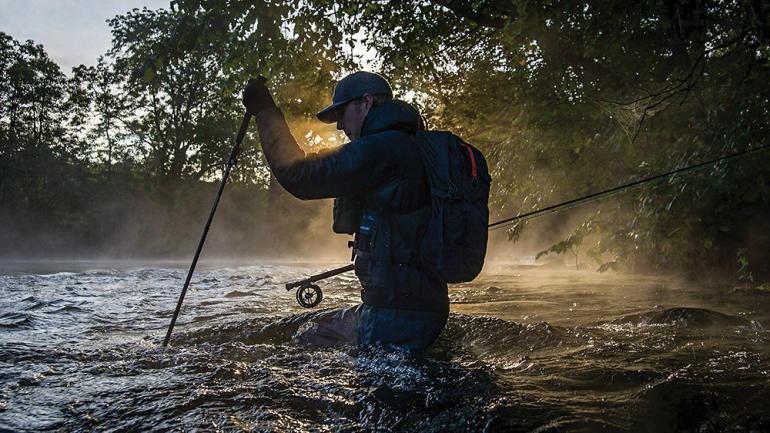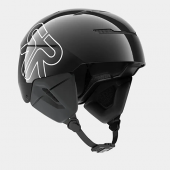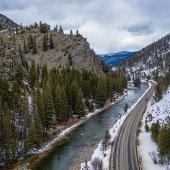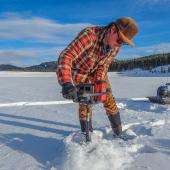Wade It Out
Tips on river crossings.
In the spring, sunshine and warming currents herald prime fishing season in southwest Montana. The fish become active and venture out from their off-season hiding spots, and bountiful bug hatches unfurl over our favorite rivers. But the higher temperatures also bring higher and more hazardous water levels as rivers swell with snowmelt. During the summer, rainstorms have a similar, though shorter-lived, effect. And even after the waters begin to level off later in the year, wild waters are simply that: wild. Adopting a few safety measures can save your life, or at least prevent a scary close call.
Go Slow
When entering a river, move in a slow, controlled manner to minimize the risk of falling. Slow and controlled doesn’t just apply to your physical movements, though; you should analyze your surroundings deliberately and carefully, too. Take the time to evaluate the water and conditions of the area you’re about to wade in, upstream as well as downstream. Water depth and streambed structure should be carefully considered. Storms, raised water levels after a hot day, and bank erosion can change the topography of your regular fishing hole overnight.
Stand Firm, Stand Low
A solid stance is important for making the perfect cast, but planting your feet in fast moving water, and on a slippery surface at that, is challenging. Spread your feet out and create a shoulder-width base for yourself, flexing your knees to lower your center of gravity.
Step Sideways
When venturing into water knee-deep or beyond, haphazardly sloshing where you want to go isn’t an option. Trying to walk normally on an obscured riverbed is foolhardy at best and dangerous at worst. Step sideways and avoid crossing your feet while moving. Keep most of your weight on the stationary foot––and don’t trust your new footing until you’re confident you can place your weight on it.
Go with the Flow
If you’re moving much, you’ll need to cross the river occasionally to gain the best position. It’s safer to move at a slight downstream angle with the current than to move directly across or against it. Make sure to test the current as you keep moving and don’t flout common sense.
Use Proper Equipment
In addition to technique, tools help keep movement safer. Felt soles give your wading boots traction on slimy rocks; studs and cleats can also bring additional grip, and are less likely to transfer aquatic organism. A wading staff is handy when navigating fast water and slippery streambeds—as a third point of contact, the staff can help you form a sturdier base as you move about the river. Finally, should you take a tumble, a wading belt keeps the water from flooding your waders and dragging you down. In very fast water or around nasty rapids, a pull-cord life jacket offers even more security.












